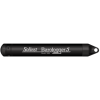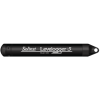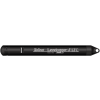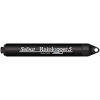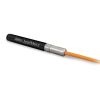Solinst Levelogger 5 Junior Water Level Loggers
Features
- Maintenance-free, water-tight design with direct or optical data upload
- Increased memory of up to 75,000 readings of level and temperature
- Compatible with Levelogger Series Software & accessories
- Free ground shipping
- Expedited repair and warranty service
- Lifetime technical support
- More
Overview
The Solinst Levelogger 5 Junior provides an inexpensive alternative for measuring groundwater and surface water levels and temperature. The Levelogger 5 Junior combines a pressure sensor, temperature detector, a datalogger, and 5-year battery (based on a 1-minute sampling rate) in one compact 22mm x 160mm (7/8" x 6.3") stainless steel housing.
Durable
The Levelogger 5 Junior records absolute pressure using the same durable Hastelloy pressure sensor as the Levelogger 5. The Hastelloy sensor performs well in harsh environments and can withstand 2 times overpressure without permanent damage.
Data Storage
The Levelogger 5 Junior features a memory with a capacity of 75,000 sets of temperature and water level data points. Readings are linear at a user-defined interval between 0.5 seconds to 99 hours. Accuracy is 0.1% FS with lifetime factory calibration. Real Time View option allows immediate viewing of live water level and temperature readings, independent of scheduled programming intervals.
Level Sensor: Piezoresistive Silicon with Hastelloy Sensor
Ranges: 5,10 m
Accuracy: ± 0.1% FS
Resolution: 0.02% FS to 0.01% FS
Units of Measure: cm, m, ft, psi, kPa, bar, (ºC, ºF)
Normalization: Automatic Temp Compensation
Temp Comp. Range: 0ºC to 40ºC
Temperature Sensor: Platinum Resistance Temperature Detector
Accuracy: ± 0.1ºC
Resolution: 0.1ºC
Battery Life: 5 Years (based on 1 reading/minute)
Operating Temperature: - 20ºC to 80ºC
Clock Accuracy (typical): ± 1 minute/year (- 20ºC to 80ºC)
Memory Modes: Continuous or Slate
Maximum Readings: 75,000 sets of readings
Communication: Optical high-speed: 57,600 bps with USB
Size: 22 mm x 160 mm (7/8" x 6.3")
Weight: 166 grams (5.6 oz)
Wetted Materials: 316L Stainless Steel, Delrin®, Viton®, Hastelloy
Sampling Mode: Linear, Real Time View, Future Start
Measurement Rates: 0.5 sec to 99 hours
Barometric Compensation: Data Wizard and Barologger 5
In The News
Sargassum Surge: How Seaweed is Transforming our Oceans and Coastal Ecosystems
Until recently, Sargassum –a free-floating seaweed–was distributed throughout the Sargasso Sea , the north Caribbean Sea, and the Gulf of Mexico. But in the space of a decade, this seaweed has, as one scientist remarks , “Gone from a nonfactor to the source of a terrible crisis.” Driven by climate change, anomalous North Atlantic Oscillation in 2009-2010 and a glut of anthropogenic pollutants, sargassum has proliferated. Seasonally recurrent mats as deep as 7m now bloom in the “Great Atlantic Sargassum Belt” (GASB), which covers areas of the Atlantic from West Africa to the Caribbean Sea and Gulf of Mexico. Every year, millions of tons wash up along the shores of more than 30 countries . Dr.
Read MoreGreat Lakes Research Center: Designing Targeted Monitoring Solutions
According to the National Oceanic and Atmospheric Administration ( NOAA ), the Great Lakes have more miles of coastline than the contiguous Atlantic and Pacific coasts combined and contain 20 percent of the world's freshwater, making it a critical region to protect and conserve. Continuous monitoring and data-informed resource management are key components of managing waters in the region. Hayden Henderson, a research engineer with the Great Lakes Research Center (GLRC), designs and deploys monitoring platforms throughout the Great Lakes. With a background in environmental engineering, Henderson enjoyed the challenge of creating systems and making them work to obtain difficult, remote measurements.
Read MoreMonitoring Meadowbrook Creek: Real-Time Data Collection in an Urban Creek
Meadowbrook Creek in Syracuse, New York, has been monitored by Syracuse University (SU) faculty and students for over a decade. Originally established by Dr. Laura Lautz in 2012, the early years of the program focused on collecting grab water samples for laboratory analysis and evaluating the impact of urban land use, human activities, and natural processes on water resources. Tao Wen , an Assistant Professor in SU’s Department of Earth and Environmental Sciences, took over the program in 2020 and upgraded the existing systems to include 4G modems that allowed for real-time data viewing. [caption id="attachment_39339" align="alignnone" width="940"] An overview of the Fellows Ave monitoring station along Meadowbrook Creek.
Read More














































